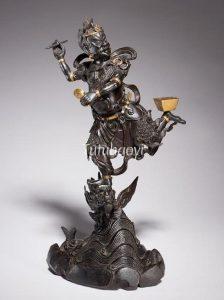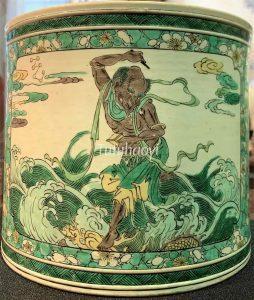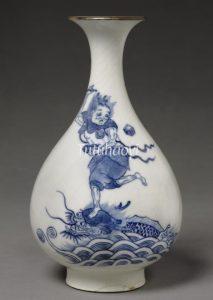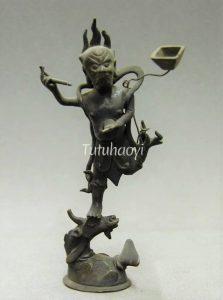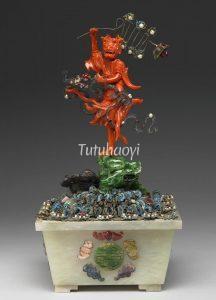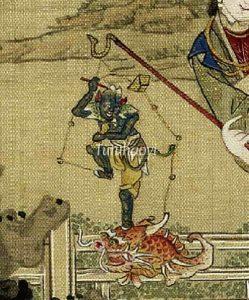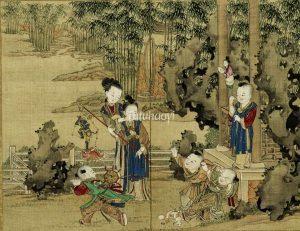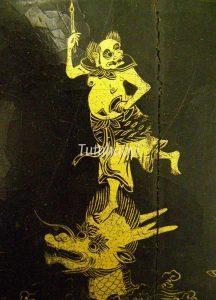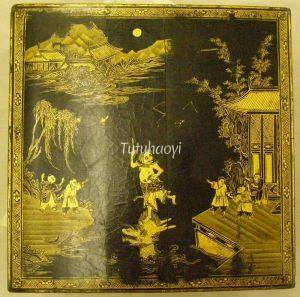When the God of Literature kicks an ink vessel, you are blessed to be the only one who can stand on the head of a dragon-carp.
魁星踢斗, 独占鳌头
© Tutuhaoyi.com owns the copyright of the description content for the images attached. Quoting all or part of the description content on this page is permitted ONLY IF ‘Tutuhaoyi.com’ is clearly acknowledged anywhere your quote is produced unless stated otherwise. (本页描述内容版权归Tutuhaoyi.com所有,转发或引用需注明 “Tutuhaoyi.com”, 侵权必究, 已注开源信息的条目除外。)
As the deity who grants success in the imperial examinations, Kui Xing 魁星 is revered as the God of Literature. The image of Kui Xing is often presented as a spirit holding a writing brush in one hand and a scroll or a tablet in the other. He is often seen standing on one foot while the other is kicking back towards an ink vessel (斗 dou).
During the Tang and Song dynasties, scholars who scored number one in imperial examinations would stand on the head of large dragon–carp reliefs on the steps in front of the imperial palace to receive the announcement of the ranking. Therefore, a person who can make it and stand on the head of a dragon-carp is considered as a champion.
When the figure of a scholar is replaced by Kui Xing standing on the head of a dragon-carp, its meaning is merged as well. The figural scene is blessing you to be the top scholar in the examinations.
Related Pun Picture:
You will certainly come out first in the imperial examinations 必定夺魁
Fig 1: bronze figure with traces of gilding, 16th century, courtesy of Minneapolis Institute of Art, Minnesota
Fig 2: porcelain brushpot with overglaze enamelled decoration, Kangxi period (1662–1722), Qing dynasty, courtesy of Princessehof Ceramics Museum, Leeuwarden, The Netherlands, photo by Mr JP Kim
Fig 3: porcelain vase with underglaze blue decoration, Yongzheng period (1723–35), Qing dynasty, courtesy of the Cleveland Museum of Art, Ohio
Fig 4: bronze figure, Qing dynasty (1644–1911), courtesy of the Trustees of the British Museum
Fig 5: planter with a coral carving figure, Qing dynasty (1644–1911), courtesy of the National Palace Museum, Taipei
Fig 6: Yixing ceramic teapot, c. 1800, courtesy of the Trustees of the British Museum
Fig 7-8: 升平乐事图, album leaf, ink and colour on silk, Qing dynasty (1644–1911), courtesy of the National Palace Museum, Taipei
Fig 9-10: wooden square box with black lacquered cover with gilt painted decoration, Qing dynasty (1644–1911), courtesy of the Trustees of the British Museum
